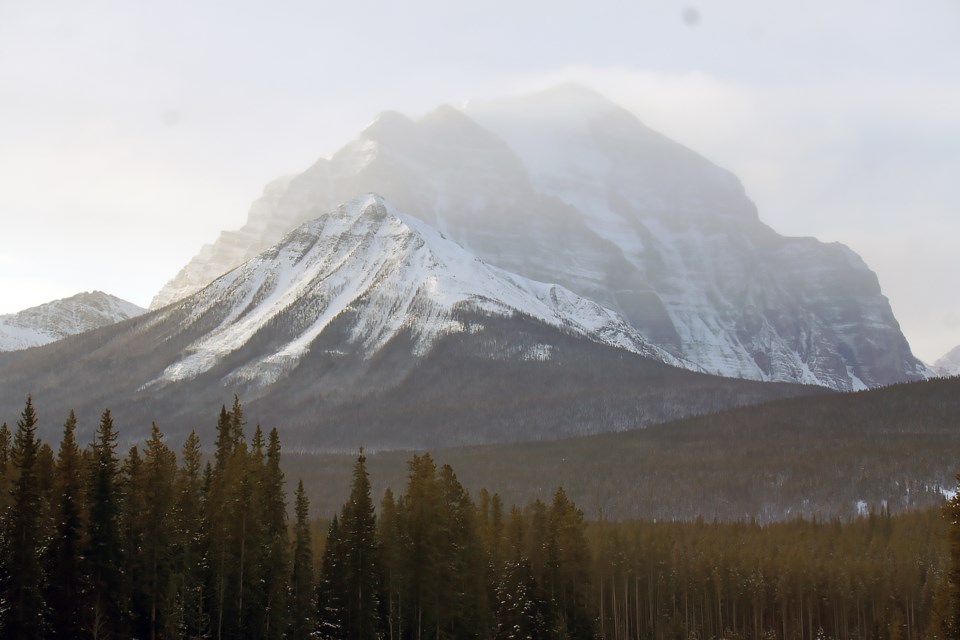LAKE LOUISE – A 30-year-old woman had a lucky escape after a big fall while climbing on the infamous North Face of Mount Temple.
Parks Canada’s rescue team was called to the March 23 incident when the lead climber took a “significant fall” to below the belayer while leading a difficult pitch close to the top of the highly-coveted Greenwood/Locke route at about 3,000 metres on the 3,544m mountain.
Officials say the injured climber was lowered to a ledge by her partner, who quickly called Parks Canada. Had the accident not happened, the talented climber was so close to being the first female to do a winter ascent.
“Visitor safety specialists responded with Alpine Helicopters and completed a helicopter sling rescue to evacuate the injured climber and their partner from their stance near 3000m,” said Amy Krause, a spokesperson for Lake Louise, Yoho and Kootenay in an email.
“Helicopter sling rescues in technical terrain present an added level of complexity and risk, however, the favourable weather conditions and cool-headed actions of the party requesting assistance made this rescue feel relatively routine.”
The injured climber was transferred from Lake Louise to Banff Mineral Springs Hospital by EMS.
“The party was prepared and equipped to handle an emergency,” said Krause.
The first ascent of Mount Temple’s North Face – full of complex rock and ice routes with highly technical pitches – was in July 1966, while the first winter ascent of the North Face didn’t come until 11 years later in 1977.
In the decades following the wall’s first winter ascent, other successful climbs of the face have remained few and far between.
In particular, the Greenwood-Locke route of the North Face is one of Canada’s most classic alpine climbs and it was not climbed in winter until 2004, by Raphael Slawinski and Ben Firth.
“It has been successfully climbed in winter only a handful of times and would be considered a lifetime achievement,” said Krause.
“The last rescue on this route took place in fall 2022 when a climber with an American party was injured after taking a lead fall in a similar incident.”
Winter mountaineering is complex with numerous hazards in addition to potential lead falls, including cornices, rock-fall, falling on steep icy terrain, and avalanches.
As with any backcountry user, Krause said Parks Canada recommends knowing the current avalanche forecast, weather and snow conditions, having appropriate avalanche safety training, wearing a beacon, carrying self-rescue gear, and having a backup plan or objective.
“This activity should only be considered by climbers with advanced technical skills,” she said.




